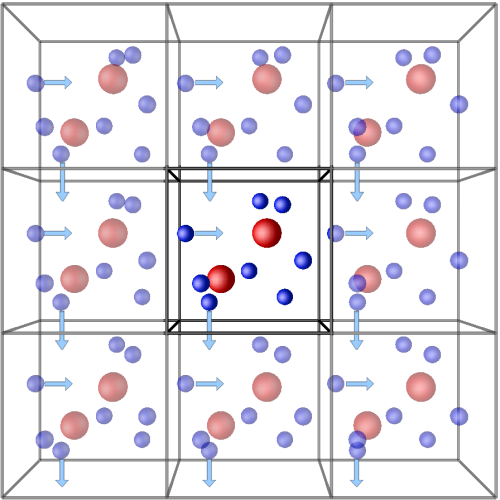The periodic boundary conditions
Taking into account the finite size of model/simulation box is crucial to compute correctly many of the structural characteristics (e.g. ring statistics) of the system being studied.
The importance of the finite size of model box can be illustrated using a 1
Currently structure models often contain somewhere from 1 thousand to several thousands of molecules/atoms. As a result a very substantial fraction of them will be influenced by the finite size of the simulation/model box. The problems is solved by applying the so-called Periodic Boundary Conditions "PBC" which means surrounding the simulation box with its translational images in the 3 directions of space, as illustrated below.
Users of Atomes should take special care that their model boxes are inherently periodic so that when the periodic boundary conditions are applied the structural characteristics computed are not compromised.

Figure 5.1 illustrates the principle of the periodic boundary conditions that can be used1 in Atomes: a particle which goes out from the simulation box by one side is reintroduced in the box by the opposite side (in the 3 dimensions of space).
When PBC are used the maximum inter-atomic distance r
Please note that the use of PBC is not mandatory, isolated molecules can be studied using Atomes↩︎